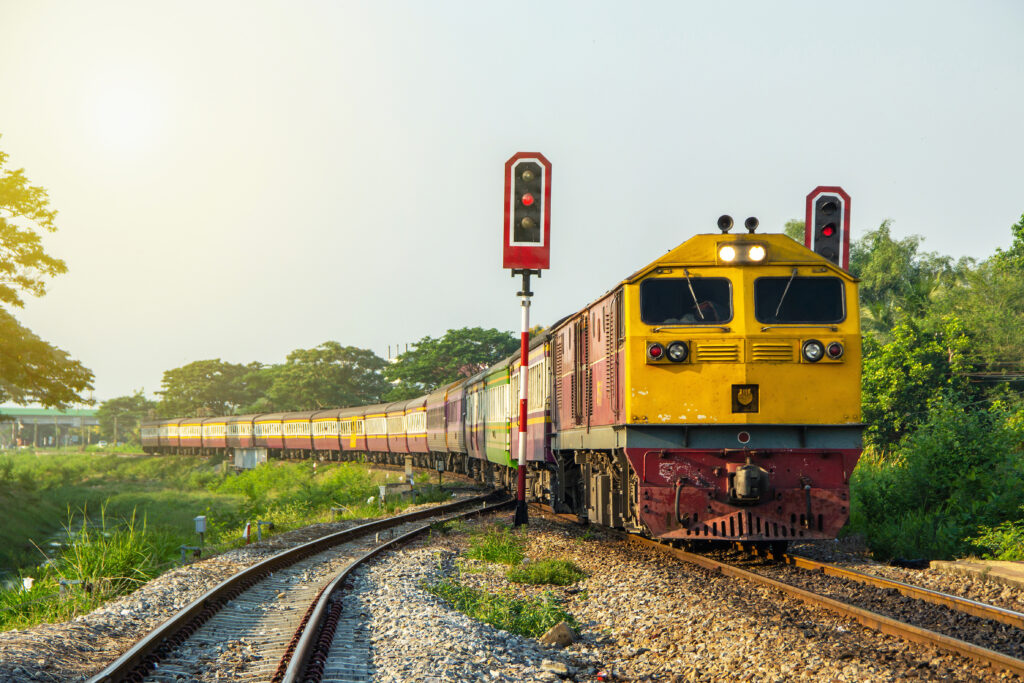The railway industry, a critical cog in the wheel of global transportation infrastructure, has long sought ways to increase operational efficiency and decrease environmental impact. A notable area of focus is railway lighting systems. This article takes a deep dive into the current practices, advances, and future directions of energy efficiency in the context of railway lamps.
Current Practices In Railway Lighting
Incandescent Bulbs: The Traditional Choice
Traditionally, incandescent bulbs have been the choice for railway lighting due to their brightness and relatively low initial cost. However, they are energy inefficient with approximately 90% of their energy being emitted as heat rather than light, leading to high operating costs over time.
Fluorescent And High-Intensity Discharge Lamps: Stepping Stones To Efficiency
Over the years, railway operators have migrated towards fluorescent and High-Intensity Discharge (HID) lamps. These offer a higher level of energy efficiency than incandescent bulbs, but they are not without drawbacks. Fluorescent lamps, for instance, contain mercury, posing environmental and health risks. HID lamps, on the other hand, require a warm-up period and can be expensive to install and maintain.
The Shift To LED Lighting
The trend in railway lighting has been shifting towards Light Emitting Diodes (LEDs) due to their superior energy efficiency, longevity, and lower maintenance costs. LEDs convert almost all the energy they consume into light, with minimal heat wastage, offering a significant improvement over traditional lighting solutions. Furthermore, the directional nature of LED lighting makes it ideal for railway applications as it can be focused on specific areas, reducing light pollution.
- LED lights offer a longer lifespan, reducing the frequency of replacements and thus lowering maintenance costs.
- LED lights offer better color rendering, crucial for signal lights in railway applications.
- LED lights are more resistant to shock and vibration, an essential feature for moving trains.
Advancements In LED Lighting
Smart LED Lighting Systems
The advent of smart LED lighting systems has further propelled the efficiency of railway lighting. These systems utilize sensors and automation to adjust lighting based on factors such as ambient light levels, train schedules, and occupancy. This results in further energy savings, decreased maintenance requirements, and enhanced passenger safety.
- Smart LEDs offer dynamic light control, allowing for automated adjustment based on natural light conditions or occupancy.
- Energy consumption can be monitored and optimized with smart LED systems, providing valuable data for energy management.
Integration With Renewable Energy
The integration of LED lighting with renewable energy sources is another noteworthy advancement. Solar-powered LED lighting systems, for instance, offer a sustainable and self-sufficient solution, especially for remote or off-grid railway stations.
- Solar panels can be used to power LED lights, making railway stations self-sufficient and reducing dependency on the grid.
- Utilizing renewable energy sources for railway lighting contributes to sustainability goals and reduces carbon emissions.
Future Directions In Railway Lighting
The Rise Of OLEDs
Organic Light Emitting Diodes (OLEDs), although still in their infancy in terms of commercial deployment, hold great promise for the future of railway lighting. OLEDs offer even higher efficiency than LEDs, coupled with the ability to produce flexible, transparent, and color-tunable lighting panels.
Li-Fi Enabled Lighting
Light Fidelity (Li-Fi), a wireless communication technology that uses light to transmit data, could also play a pivotal role in future railway lighting systems. Integrating Li-Fi with railway lighting could not only enhance energy efficiency but also provide high-speed, secure internet connectivity.
- OLEDs provide a more uniform light distribution and can be made into flexible panels, offering innovative design possibilities.
- Li-Fi technology, integrated with railway lighting, could offer passengers high-speed internet connectivity, making rail travel more attractive.
Environmental And Economic Implications
Reduction In Carbon Footprint
With the transportation sector accounting for a significant portion of global carbon emissions, the transition to energy-efficient railway lighting contributes to a reduction in the industry’s carbon footprint. This aligns with the broader push towards sustainable and environmentally friendly practices in the transport sector.
Economic Benefits
The economic benefits of energy-efficient lighting in the railway industry are also significant. While the initial costs may be higher, the long-term savings from reduced energy consumption and maintenance costs are substantial. Moreover, regulatory incentives and subsidies for energy-efficient technologies can further offset the initial investment.
- The shift to energy-efficient lighting in railways contributes to global efforts to reduce carbon emissions.
- Economic benefits extend beyond energy savings to include lower maintenance costs, reduced downtime, and potential government incentives for using energy-efficient technologies.
Challenges And Potential Solutions
High Initial Costs
One of the main challenges to the adoption of energy-efficient railway lighting is the high initial cost. While long-term savings justify the investment, the upfront costs can be a barrier for some railway operators. Strategies such as innovative financing and leasing models, along with governmental subsidies, can help to overcome this hurdle.
Technological Challenges
Technological challenges, including integration with existing infrastructure and ensuring the reliability and robustness of new lighting systems, can also pose obstacles. Continued research and development, along with robust testing and validation processes, are crucial to address these issues.
- Innovative financing models, including leasing and ‘light as a service’ models, can help railway operators overcome the barrier of high initial investment.
- Continued investment in research and development will help solve technological challenges such as integration with existing infrastructure and reliability of new systems.
FAQs
Q: What are the main types of lamps used in the railway industry?
A: Traditionally, incandescent bulbs were used, followed by fluorescent and HID lamps. Currently, LED lighting is the dominant choice due to its superior energy efficiency and longevity.
Q: Why is LED lighting favored in the railway industry?
A: LED lighting is favored due to its high energy efficiency, long lifespan, reduced maintenance costs, and the ability to focus light on specific areas, thus reducing light pollution.
Q: What is the potential of OLEDs in railway lighting?
A: OLEDs, still in their infancy in terms of commercial deployment, hold promise due to their high efficiency, flexibility, and color-tunable lighting panels.
Q: What role could Li-Fi play in future railway lighting systems?
A: Integrating Li-Fi with railway lighting could provide high-speed, secure internet connectivity while enhancing energy efficiency.
The transition to energy-efficient lighting, particularly LED and potentially OLED technology, is a key trend in the railway industry. This shift, coupled with advancements such as smart lighting systems and integration with renewable energy sources, offers significant potential for reducing the industry’s environmental impact and operational costs. Future directions, including the adoption of OLEDs and Li-Fi enabled lighting, further underscore the exciting potential of this field.
While challenges exist, the benefits of energy-efficient railway lighting, both environmental and economic, are increasingly difficult to ignore, signaling a bright future for this aspect of railway operations.


